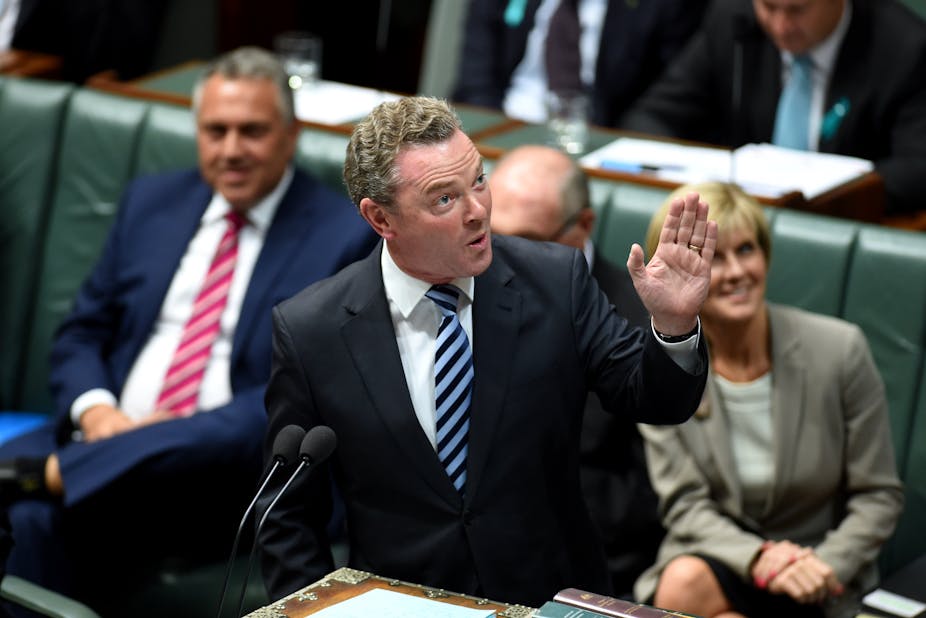If the main reason for the proposed changes to higher education was to increase university funding, cut government spending, or a combination of both, the simple answer would be to increase the caps on what all universities are allowed to charge students.
However, Education Minister Christopher Pyne and most vice-chancellors seem to have no interest in this option. They prefer to introduce a hierarchical system where funding levels match universities’ status.
Recognising this, policy analysts have sought ways to stop price gouging under “fee deregulation”. The most recent proposal is to progressively “tax” fee increases.
The best of the taxing proposals was developed by David Phillips, a former senior officer of the Department of Education, and HECS architect Bruce Chapman in consultation with current officers of the Department of Education.
Chapman’s submission to the current Senate inquiry into the 2014 Higher Education Bill outlines the proposal very briefly.
Phillips and Chapman propose that for every dollar that a university charges above a fee threshold it would lose a proportion of its total government subsidy. As Chapman explains in his submission, the operation of what he calls the “University Subsidy Contingent Scheme” would depend very much on where fee thresholds were set and the amount of subsidy that would be lost for exceeding each threshold.
Chapman illustrates the proposal with a hypothetical example. If a university charged fees A$5,000 above the current fee cap, it would lose 20% of the increase from its government subsidy. For fees A$10,000 above the cap universities would lose 60%. For fees more than A$10,000 above the cap they would lose 80% of the increase from their government subsidy.
Higher education policy analyst Andrew Norton applied this to the University of Western Australia’s proposal to charge A$16,000 per year for each of its basic undergraduate programs.
Norton estimates that for humanities subjects the Phillips Chapman tax would be about A$1,000 for the first A$5,000 above the first threshold of A$6,499 and another A$2,700 for fees above the second threshold of A$11,499 up to the third threshold of A$16,499.
The tax is elegantly designed to cut government subsidies with increases in fees, and thus increases in the amount of money owed to the government that may not be repaid.
The thresholds of the Phillips Chapman tax could be changed by successive governments, allowing it to work for them. This could avoid many of the difficulties with the current bill that I and many others foreshadowed such as price gouging and a consequent big increase in students’ unpaid debt.
It is therefore reportedly being seriously considered by the government as the latest of numerous changes floated since the bill was announced almost a year ago.
Norton argues against a HECS tax because it wouldn’t inhibit universities’ likely allocation of some of the fee increases to research - which doesn’t directly benefit students.
Norton also opposes a HECS tax because it would result in some students compensating for costs they wouldn’t generate. For example, the government would reduce subsidies even for students who pay their fee upfront without incurring a loan, thus not incurring additional costs for the government.
While this analysis is correct within Norton’s terms, not all object as strongly as Norton to universities cross-subsiding between students, and to the extensive subsidy of research by revenue generated from teaching.
Chapman does not discuss the interaction of the tax with the government’s proposal to require institutions to allocate 20% of additional fee revenue to scholarships for disadvantaged students.
Leading equity practitioner Mary Kelly and Equity Practitioners in Higher Education Australasia have heavily criticised the proposed scholarship scheme. They say the current system is much fairer.
However, by increasing the HECS tax or lowering the thresholds at which it is levied, the government could increase revenue to continue funding the scholarships and student financial support which it currently plans to cut.
The Phillips Chapman tax would be much more effective than earlier proposals to establish a body to monitor, review or regulate fee increases.
That would be an impossible balancing act between being too light a regulator and imposing no discipline on fee increases, or too heavy a regulator, meaning fee “deregulation” doesn’t really exist.
The most fundamental objection to a HECS tax is that it would vertically stratify fees, status, resources and elitism among Australian universities. That is an outcome that Chapman and Phillips probably do not support but which Minister Pyne and the Group of Eight universities appear to seek.
The elite universities, which already have more resources and recruit overwhelmingly students from high socio-economic status backgrounds, would be able to charge higher fees than other universities. This would increase their resources and status, increasing benefits to their already advantaged students.
This would erode the relative position of most universities and would thereby risk the high ranking of Australia’s higher education system. The tax would do nothing to protect the rural universities and campuses, which crossbench senators and the National Party seek to protect. So it is doubtful that the “Pyne Bill Version III with tax” would be passed by the Senate.

